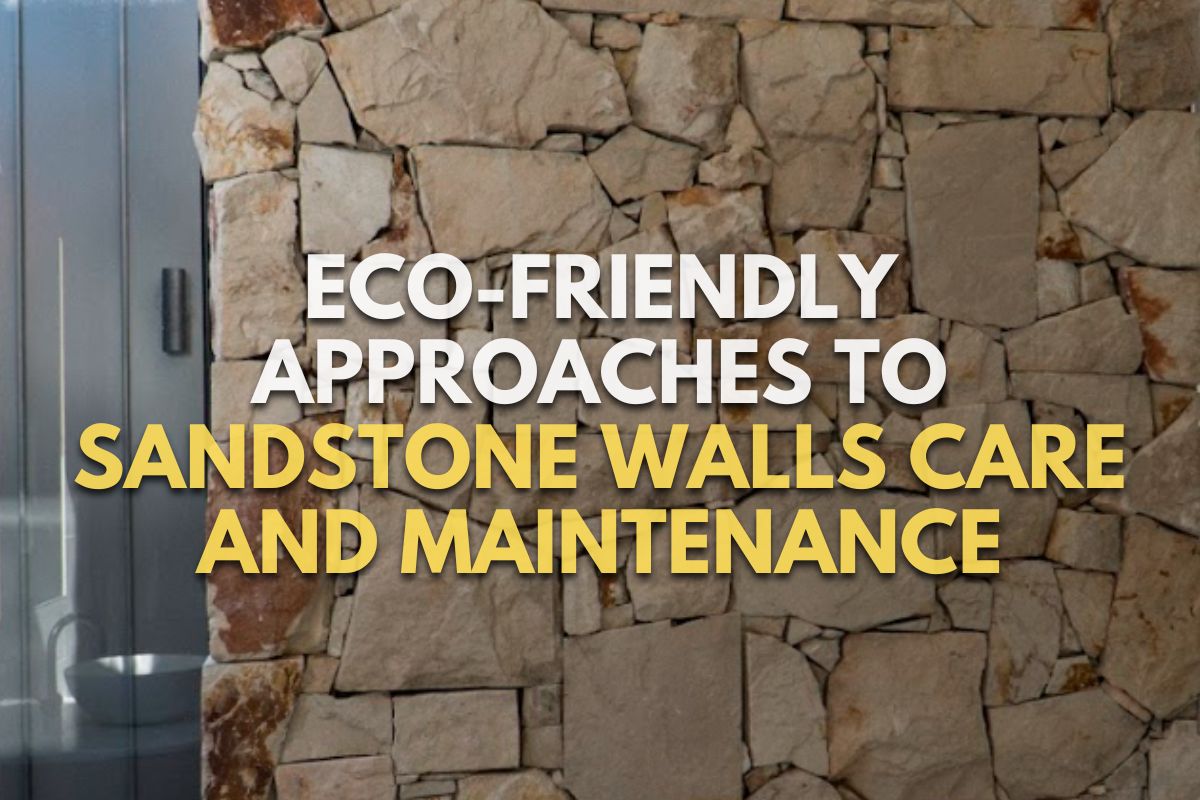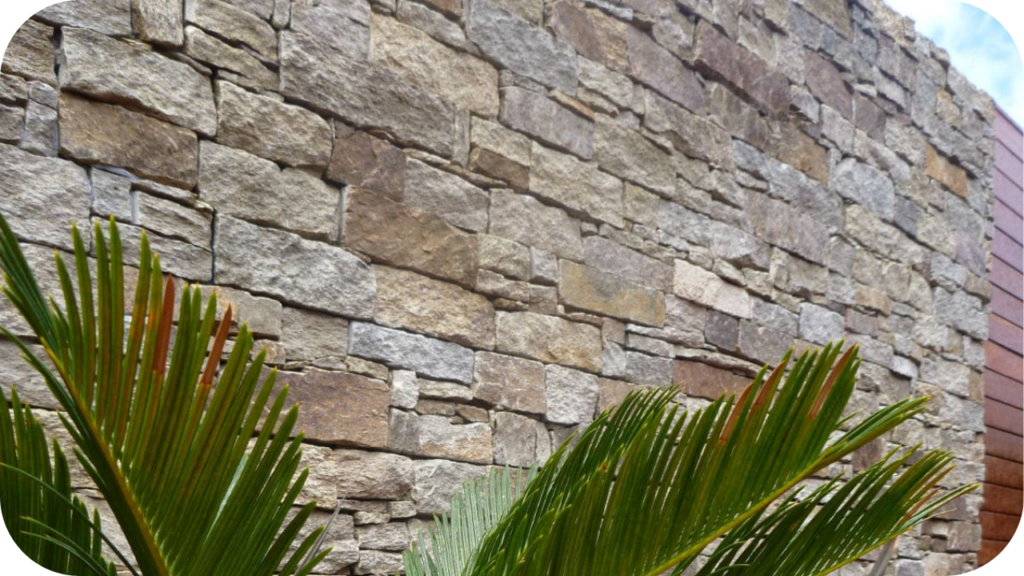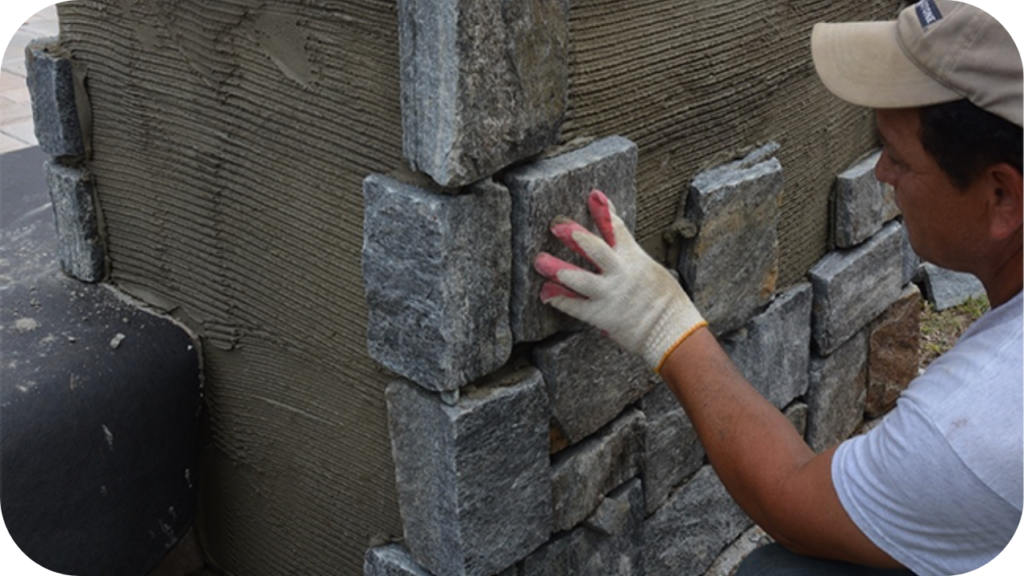Maximizing the Lifespan of Your Outdoor Sandstone Features
Outdoor sandstone features can deteriorate quickly if not properly maintained, losing their aesthetic appeal.
Factors like weather exposure, moisture, and wear take a toll, causing fading, staining, and erosion.
This article offers expert advice on maximizing the lifespan of your sandstone through effective maintenance strategies. Discover how simple practices can protect and rejuvenate your sandstone, keeping it vibrant and durable for years to come.
Understanding Outdoor Sandstone Characteristics
Sandstone is a sedimentary rock composed primarily of sand-sized mineral particles or rock fragments. Here are some critical characteristics to consider:
- Porosity: Sandstone is notably porous, allowing it to absorb water and other fluids. This characteristic makes it susceptible to weathering and erosion, particularly in environments with freeze-thaw cycles or heavy rainfall.
- Color Variability: Sandstone comes in a variety of colors, including browns, reds, yellows, and grays, depending on the minerals it contains. While this range offers great versatility in design, the lighter colors may show stains more readily, which can affect maintenance strategies.
- Strength and Durability: While generally durable, the strength of sandstone can vary significantly based on its composition and the cementing material binding the grains. Stones with quartz cement are typically harder and more weather-resistant than those cemented by clay.
- Texture and Finish: Sandstone’s texture can range from smooth to gritty, depending on its grain and cement composition. The surface can be left natural, honed, or polished; however, smoother finishes may require more frequent maintenance to retain their appearance.
Choosing the Right Type of Outdoor Sandstone
Here’s how to select the best sandstone for your outdoor environment:
- Density and Absorption: Opt for denser sandstone varieties, as these are less porous and more resistant to water absorption, minimizing the risk of weathering and erosion over time. High-density sandstones like quartzitic sandstone are more durable against the elements, making them suitable for areas with severe weather conditions.
- Color Consistency: Consider the consistency of the stone’s color and how it complements your outdoor space. Sandstone colors range from whites and creams to deeper reds and browns. Darker colors may retain more heat, which can be a factor in very sunny areas.
- Finish Type: The surface finish of sandstone affects both its look and maintenance needs. A honed or polished finish might require more care to maintain its appearance but will offer a modern and sophisticated look. Rough-textured finishes are more forgiving with stains and wear but may require regular cleaning to prevent dirt buildup.
- Grain Size: The size of the grains in the sandstone can affect its overall strength and aesthetic. Coarser grains typically provide a rustic appearance, while finer grains are better for a sleek, smooth look.
Proper Installation Techniques for Outdoor Sandstone
Proper installation is essential for maximizing the lifespan of outdoor sandstone features. Here are critical techniques to ensure a durable and stable installation:
Foundation Preparation
Start with a solid foundation. Ensure that the sub-base is well-compacted and level. A mixture of gravel and sand is typically used for the base, providing adequate drainage and stability. The depth of the base should be adjusted based on the load it will bear and the local soil conditions.
Drainage Considerations
Good drainage is crucial to prevent water retention, which can lead to freeze-thaw damage in colder climates. Install the sandstone so that it slopes away from structures to facilitate water runoff. In areas with heavy rainfall, consider incorporating a drainage system beneath the stone to help manage excess water.
Mortar and Jointing
Use a flexible mortar suitable for outdoor and possibly freeze-thaw conditions.
Mortar should be applied evenly to avoid air pockets, which can cause water to accumulate and weaken the structure. For paving, ensure joints between the stones are filled with sand or a jointing compound that allows for some movement without cracking.
Sealing
Although not always necessary, applying a sealant can protect the sandstone from stains and reduce porosity, enhancing its resistance to weathering. Choose a breathable sealant that won’t trap moisture inside the stone.
Regular Cleaning and Maintenance of Outdoor Sandstone
Here’s a detailed guide on how to keep your sandstone in top condition:
- Routine Cleaning: Regularly sweep or rinse your sandstone to remove debris, dirt, and leaves that can accumulate and cause staining. For a deeper clean, use a mild detergent mixed with water and a soft brush to gently scrub the surface. Avoid using harsh chemicals or pressure washers, which can erode the stone’s surface.
- Stain Management: Address spills and stains immediately to prevent them from setting in. Organic stains from leaves or berries can be cleaned with a solution of 12% hydrogen peroxide and a few drops of ammonia. Oil-based stains may require a poultice to draw out the oil from the pores of the stone.
- Sealing: Consider sealing sandstone to enhance its resistance to weathering and staining. A breathable sealant is ideal as it allows moisture within the stone to evaporate. Reapply sealant every two to five years, depending on exposure to weather elements and foot traffic.
- Regular Inspections: Periodically inspect your sandstone for signs of wear or damage, such as chipping or cracking. Early detection of minor issues can prevent more significant problems down the line.
Protecting Outdoor Sandstone Against Weathering and Environmental Damage
Protecting outdoor sandstone from weathering and environmental damage is vital for preserving its structural integrity and aesthetic. Here are effective strategies:
- Sealing: Apply a high-quality sealant to create a protective barrier against moisture, which is a primary cause of weathering. Sealants help prevent the penetration of water and pollutants, reducing the risk of erosion and staining. Opt for a breathable sealant to allow trapped moisture to escape, preventing damage from within.
- Positioning: Consider the placement of sandstone features. Avoid areas where water pools or where they are directly exposed to harsh weather elements. Use strategic landscaping to divert water away from the sandstone and provide shade to minimize exposure to intense sunlight.
- Regular Maintenance: Keep the sandstone clean from organic materials like leaves and twigs, which can retain moisture and cause staining. Periodically check for and repair any cracks or chips that could allow water ingress, exacerbating freeze-thaw cycles and erosion.
Preventing Biological Growth on Outdoor Sandstone
Preventing biological growth, such as moss, algae, and lichen, on outdoor sandstone is essential to maintain both its appearance and structural integrity. Here are targeted strategies to help you manage this issue:
- Regular Cleaning: Keep the sandstone clean and free of debris. Use a soft brush and a solution of mild detergent and water to gently clean the stone. This routine helps prevent spores from taking hold and thriving on the surface.
- Improve Drainage: Ensure that the area around your sandstone features has good drainage. Stagnant water encourages the growth of moss and algae. If necessary, adjust the landscaping to promote better water runoff away from the stone surfaces.
- Sun Exposure: Whenever possible, allow for maximum sun exposure to the sandstone areas. Sunlight is a natural deterrent to moss and algae growth because these organisms typically thrive in damp, shaded conditions.
- Use of Fungicides: For persistent biological growth, consider the application of a fungicide designed for use on stone. Choose a product that is safe for sandstone and apply according to the manufacturer’s instructions to avoid discoloration or damage to the stone.
- Sealing: Apply a breathable sealant that includes anti-fungal properties to help prevent spores from penetrating the porous stone and establishing growth
Avoiding Harsh Cleaning Methods of Outdoor Sandstone
Preserving outdoor sandstone involves using gentle cleaning methods that protect its porous surface from damage. Harsh cleaning techniques can accelerate erosion and compromise the stone’s natural beauty. Here’s how to safely care for your sandstone:
- Avoid High-Pressure Washing: High-pressure water jets can erode the surface of sandstone, stripping away its protective layers. Instead, use a garden hose with a gentle spray to wash off dirt and debris.
- Steer Clear of Acidic Cleaners: Acid-based cleaners, including vinegar and some commercial stone cleaners, can etch sandstone, causing permanent damage. Always use pH-neutral cleaning solutions designed for use on natural stone.
- Soft Cleaning Tools: Use a soft-bristled brush or sponge for cleaning. Hard brushes or abrasive tools can scratch the sandstone surface, making it more susceptible to staining and weathering.
- Spot Cleaning Stains: For localized stains, apply a poultice specifically formulated for stone. This method draws out the stain without the need for vigorous scrubbing that might harm the sandstone.
- Routine Maintenance: Regular, gentle cleaning is preferable to less frequent, more aggressive treatments. This approach helps maintain the stone’s integrity and appearance without exposing it to harsh methods.
Inspecting and Repairing Outdoor Sandstone Damage
Regular inspection and timely repair of outdoor sandstone damage are crucial for maintaining its longevity and appearance. Here’s how to effectively manage this:
- Routine Inspection: Periodically inspect your sandstone features for signs of wear, such as cracks, chips, or erosion. Pay attention to areas prone to water accumulation, as these are more susceptible to damage.
- Immediate Action: Address any issues promptly to prevent them from worsening. Small cracks or chips can be repaired using a suitable stone epoxy or filler. Ensure the repair material matches the color and texture of the surrounding stone for a seamless finish.
- Professional Assistance: For extensive damage or structural concerns, seek professional help. Stone restoration experts can assess the damage and recommend appropriate repair methods to restore the sandstone’s integrity.
Conclusion: Enjoying Long-Lasting Outdoor Sandstone Features
With diligent maintenance and proactive care, your outdoor sandstone features can withstand the test of time while retaining their natural beauty.
Don’t wait until issues arise; take proactive steps now to preserve and protect your investment, ensuring years of enjoyment in your outdoor space.









